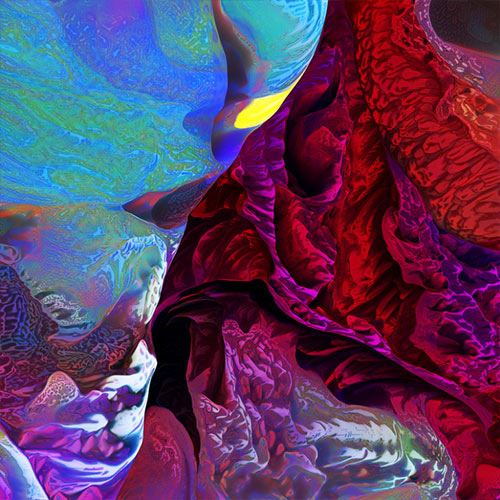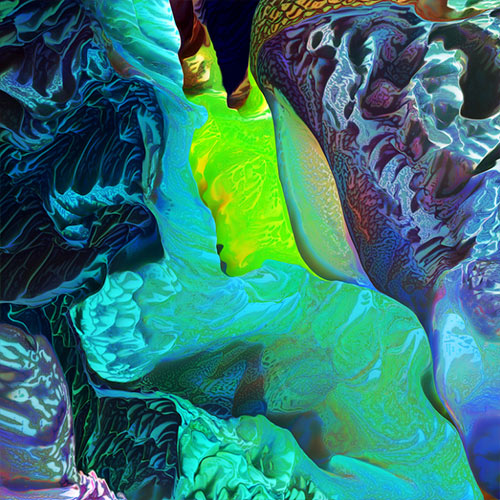Jonathan McCabe, Instability Landscapes.

Jonathan McCabe creates a series of imaginary landscapes full of randomized textures, colors, and arrangements. McCabe uses Alan Turing’s reaction diffusion equations to generate these designs. This specific series additionally uses multi-scale Turing instability. This creates the mixing and merging of patterns and colors as it generates Turing patterns of spots and stripes. I find these computation arrangements inspiring in their ability to replicate familiar existing landforms but still manage to make it look like a fantasy with the psychedelic color pattern and mixture of texture. McCabe creates “algorithmic botany” through these formulaic computation operations to create an end result of an image that resembles biological forms.
As an architecture major, using computational randomization to create these landforms would be an interesting challenge for creating sites to build for. They also serve as good visualizations for collage or other methods for representing the landform. Having sources such as the Instability Landscapes for architectural exploration would be a unique way to design for formations that don’t exist in our real world, but are rather digitally man-made. McCabe’s use of shadows, color contrast, and twisting and shape of forms creates a set of stimulating and experimental images.

![[OLD FALL 2020] 15-104 • Introduction to Computing for Creative Practice](wp-content/uploads/2021/09/stop-banner.png)